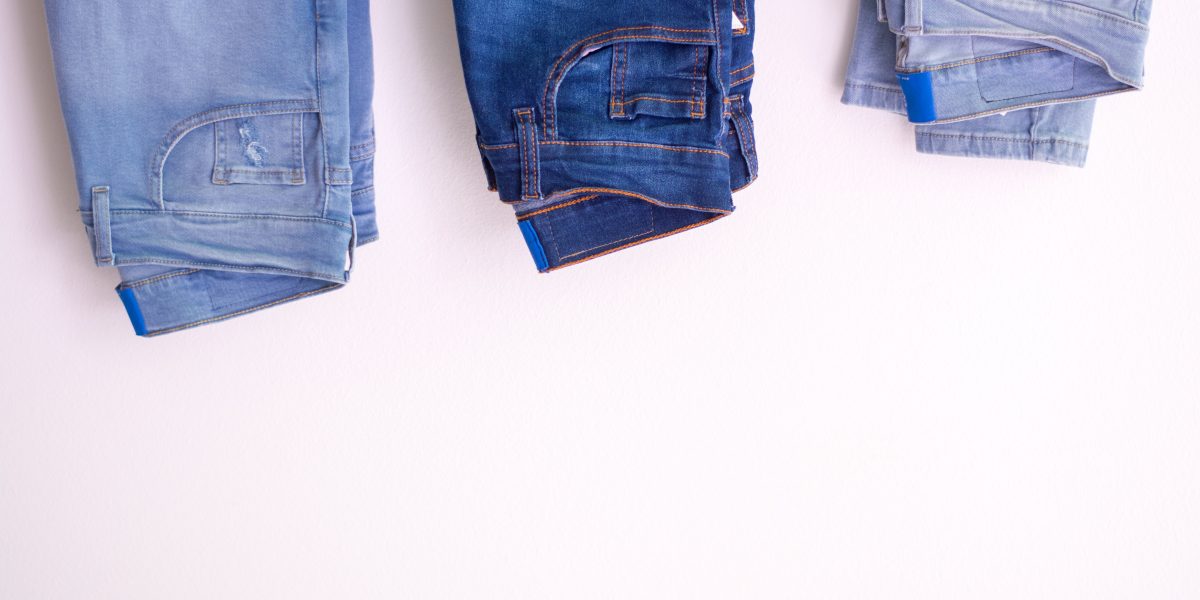Fashion
2020 Manufacturing Trends
2020 is in full swing, and trends in the fashion industry are beginning to emerge. Many manufacturers are anxious about what the rest of the year will bring. However, if manufacturers are aware of the upcoming trends, they can prepare accordingly. The following are some projections the industry is likely to see.
Prioritizing Sustainability
Most people don’t view the fashion industry as sustainable. With threats such as climate change, however, many consumers are looking for more earth-friendly options. They will want to stay away from brands that require excessive energy consumption, pollution, and waste. Fashion leaders need to change their ways to appeal to customers. Taking significant steps to reduce their carbon footprint, however, can turn into a powerful opportunity for advertising.
The younger generation leading the current earth-friendly movement has stated that they’re open to paying more for clothing that is safer for the environment. Many believe that sustainability is simultaneously one of the industry’s biggest challenges and opportunities.
New Materials
Fashion brands are also interested in creating sustainable fabrics that are safer for the environment than today’s harmful materials. Thanks to recently-developed fiber technology and new materials, there are a variety of opportunities. We can expect to see a strong emphasis on material innovation over the course of the year. In fact, sixty-seven percent of industry leaders believe that using sustainable materials is essential for their company’s future. Some companies have already begun creating alternatives to leather with pineapple leaf fibers.
Future Risks
Unfortunately, many fashion executives are feeling pessimistic about the future of the industry. The world is threatened by geopolitical instability and the risk of an upcoming recession. Every world event has a direct impact on the global economy and the entire fashion industry. To combat these risks, fashion leaders have to exercise caution by planning for risks ranging from trade tensions to new policies.
Fashion manufacturers need to stay on top of things by closely monitoring global events. They should also exercise operational flexibility and digitize all the equipment possible.
The upcoming year presents a variety of challenges to the fashion industry. Manufacturers, however, can stay ahead of the curve by keeping a careful eye on current events and becoming more sustainable than ever before.
An Update on Clothing Production In The US
Trends for clothing production are starting to shift from previously favored foreign manufacturing to garments being marketed and produced in the United States. Clothing production was one of the first industries lost to offshore marketing in the 1960s. Current design, technology, and flexibility changes have allowed for US marketing to be more desirable and make its comeback.
Past Trends
Past trends that changed US clothing production started in the 1960s when outsourcing became cheaper for labor, and there were more efficient processes for products available in foreign countries at that time. The majority of production continued in foreign countries when trade policies of the 1990s wiped out most of the restrictions and duties placed on foreign-made clothes. This made foreign markets even more desirable when it came to profiting from clothing production.
Production Shifts to the US
There are many reasons for clothing production to make its current shift to the United States, including technology advances, consumer attitudes, and merchandising techniques. This change is expected to continue making the United States a bigger part of clothing production from design through marketing.
Technology has assisted clothing production in many ways, including production processes and equipment. United States production processes have started using automation technology which includes, computerized production, 3D printing, and robots that can sew called “sewbots.” The United States has made great leaps when it comes to technology and clothing production.
Consumer attitudes and merchandising techniques are a heavy influence on bringing clothing production back to the US. The internet has opened clothing design to be an instant gratification process with companies like Amazon.
Consumers and companies are initiating the production of products in the US through different marketing and campaigning strategies. New processes are helping to make clothing production simpler by requiring less inventory, smaller batches, and quicker turnaround times.
It is exciting that clothing production trends are making a comeback in the United States. This will prove to be a huge asset to our country as clothing production is a large percentage of profit for trade commerce. Clothing production in the US will be favorable for designers located in the states as they will be satisfied in seeing their clothing products-completed from beginning to end within their locale.
Sustainable Clothing For Winter
In recent years, sustainability has become something of a buzzword for several industries. Sustainability is influencing conversations about everything from transit and energy to food and clothing. One place where the discussion about sustainable, ethically produced goods is starting to have a big impact is the world of winter clothing. Consumers, especially young people, are increasingly interested in making ethical choices and finding sustainably-produced clothing.
Winter coats have often been fraught with controversy. The use of fur has been controversial for decades, now. No one can forget the PeTA protestors who would splash people in fur coats with paint. Canada Goose coats have even been controversial for their use of goose down and coyote fur. At the same time, some synthetic fibers are not biodegradable. Extruding more plastics is unlikely to help the environment or the animals, either. In order to find sustainable, ethical winter gear, a little bit of research is needed.
Some brands have adapted to the new marketplace. Many brands have established recycling programs for their old clothes. The brands then recycle, re-purpose or donate the clothing items to people who will wear them. Typically, they reward customers with coupons or discounts. H&M, the North Face and Levi’s are among the brands that have clothing recycling programs. Many of these companies will even accept clothing from brands other than their own. Supporting these socially responsible brands can mean that everyone wins.
Another way to make winter clothing more sustainable is not to create new demand. That’s right: thrifting is a great way to be a more ethical consumer. Instead of supporting fast fashion, support well-made items and the idea of re-use. Thrifting is also a great way to reduce the demand for new animal-based products made with goose down, wool or fur. By thrifting, it’s possible to get more out of the animal products that have already been harvested and used.
Finally, synthetics have come a long way. Many brands market items made from high-performance fleece that’s both warm and durable. Synthetic insulation is often more effective than natural products like goose down. Now that every brand has a website, it’s possible to find out the specs of the insulation used in winter gear and see what’s most efficient.
Breaking Down Sustainable Fashion
Sustainability has become a media buzzword over the past few years, and with good reason. People are realizing that it’s important to manage the world’s resources more effectively. High fashion is not often associated with prudence or sustainability. Instead, designers have long cultivated a decadent image. In the 1980s and 1990s, designers like Isaac Mizrahi famously pushed the envelope and lined garments with expensive products like mink fur. Today, fashion is taking a different tack and embracing sustainability.
Issues like climate change have forced fashionistas to confront their spending habits. The trend in fast fashion has meant the production of lots of goods that are worn for only a season or so before being discarded. While the constant production is good for business, the emissions from the mills that make the fabrics and factories where the clothes are pieced together are bad news for the environment. A good way to combat this is to buy investment pieces that will last for several seasons. Replacing buttons or adding trim at home can be a great way to update clothes instead of discarding them. Thrift-store finds can also be upcycled.
Another issue when it comes to sustainability is the use of natural resources in clothing and fabric production. Cotton requires lots of water to be grown, often in parts of the developing world where that resource is precious. These products then often have to be shipped long distances to countries like the US and UK where the end-user purchases them. Making an effort to source locally-produced fabrics and clothing can make a dent in this problem. Purchasing jeans made from recycled denim is also a step in the right direction.
Finally, the issue of human rights in the production of clothing is a serious one. Because the US addressed this issue in the early 1900s, it can be easy to forget that not everyone in the developing world has the same protections. Workers in mills and factories overseas often endure unsafe conditions and discrimination on the job. Women, in particular, are impacted by this. Luckily, the fashion community has become more introspective and interested in these issues. By partnering with organizations like the New Standard Institute, fashion writers, magazines and designers are taking a stand for sustainability.
Sustainable Fashion & Why It Matters
Sustainable fashion is a movement. The goal is to place environmental, social and ethical improvements within the fashion industry and to create new value and deeper wealth for society as a whole. This can be achieved by reducing the amount of waste, prolonging the life cycle of materials and reducing harm to the environment as a result of production and consumption.
Sustainable Clothing
Sustainable clothing refers to the fabrics that are created or re-purposed from eco-friendly resources. Being environmentally conscious about our clothing means buying clothes second-hand or from thrift stores, donating, reusing or reselling used clothing, and reducing the amount of clothing one has in general.
The general three principals here are reduce, reuse, recycle.
The Five Main Issues Being Addressed
Although all clothing has at least some negative impact on the environment, the overall idea of sustainable fashion is to make a difference and improve efforts addressing environmental and social concerns. Here are the five main issues that are currently being addressed to provide more sustainable fashion:
Water Usage
Although the Earth is covered in water, most of it isn’t usable due to saltwater or it being polluted. There are such high demands for freshwater for drinking and for agricultural purposes and as a result, brands are looking to see how they can cut back how much water is being used to make their clothing.
Hazardous Chemicals
The hazardous chemicals from dyes and finishes oppose a danger for the workers producing the clothing as well as the community water sources. Coming up with innovative alternatives to dyes and finishes from the productive processes are key.
Short Lifecycle
With brands constantly releasing new designs and consumers constantly purchasing, the biggest goal in sustainable fashion is to buy less and wear their current clothing longer.
Waste
This is where the whole concept of reduce, reuse, recycle comes in. There should be an effective way to make products useful again whether that’s repairing garments or creating new pieces out of the old.
Agriculture
Utilizing organic cotton, linen and other fibers helps reduce the water consumption needed to make clothing other than the conventional growing methods.






